Wolf’s Must-Have Tools (2023)
Important Notice
This site is no-longer being maintained, and the content and links found here may be irrelevant and outdated. It is online for archival purposes only.
It’s been a while since I recommended any tools, so here’s a small batch of ones I’ve found very helpful for setting up and running our light show. I use most of them around the house the rest of the year as-well.
Cable (Zip) Tie Gun:
I’ve got a couple of these, since I seem to misplace at least one of them throughout the year. If you work with Zip Ties, and you likely do if you are running a Christmas light show, this is a huge time-saver:

As of this writing (December, 2023) they cost around $20 at Harbor Freight. It seems like a lot, but once you’ve used one, you will likely wonder how you survived without it. It tightens (adjustable) and cuts the tails off zip ties with a few squeezes of the handle. I previously used cheap harbor freight wire strippers to accomplish the same thing, but this purpose-made tool works significantly easier/better.
Network cable conductor tool:
I really wish I had discovered these things about 25 years ago. That’s how long I’ve been building my own network cables. This would have saved me SO many blisters, cuts, and sore fingers. I’ve seen other variations of these, but this is the simplest and easiest to use by-far. You can quickly untwist and straighten the conductors for insertion into RJ45 crimp connectors.
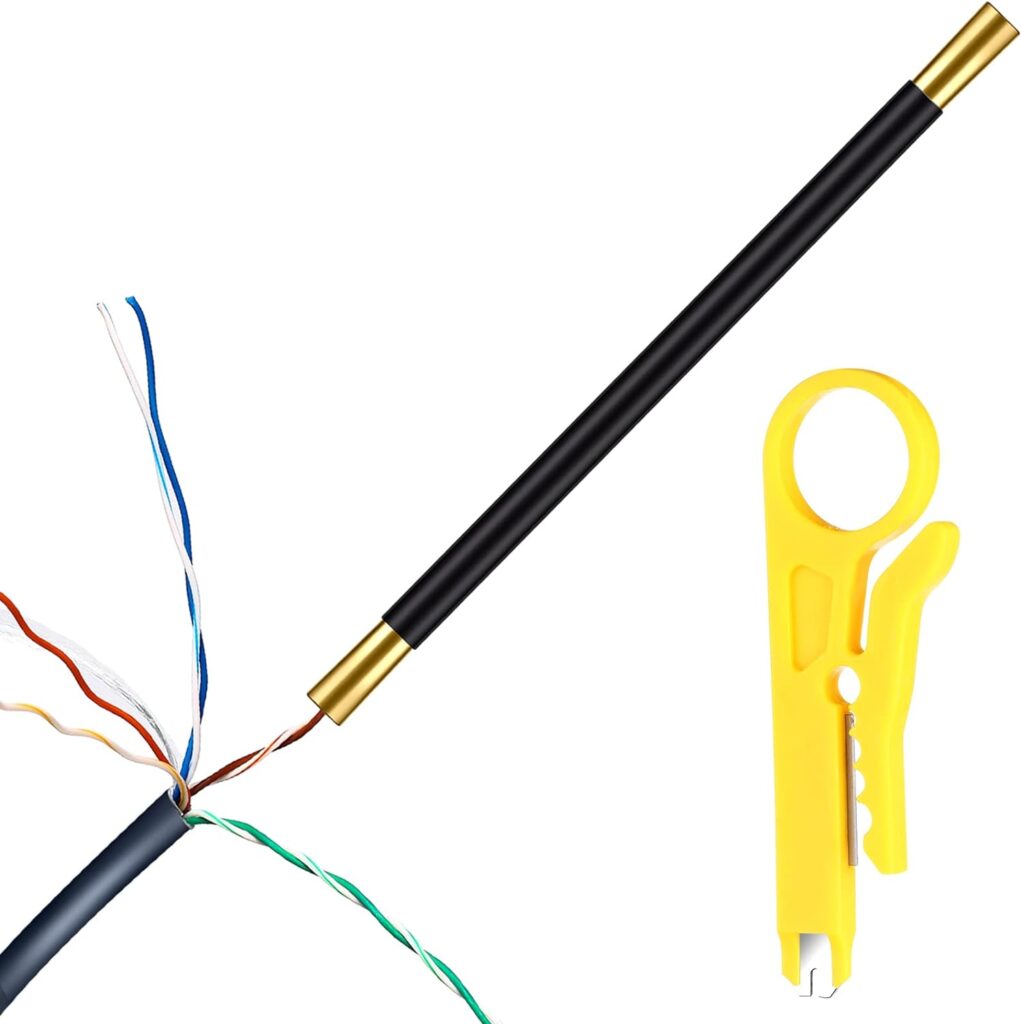
You can get one at Amazon.com (affiliate link). I use the Cat. 5/6 version. It comes with a handy jacket stripping tool as-well.
Network Cable Tester:
Don’t go cheap with this! You’ve likely spent thousands of dollars on controllers, PSUs, pixels, and other hardware for your show, and are using Ethernet and high-speed serial (differential) data over Cat. 5E/6 cables to keep everything running and synchronized. One sketchy connector or damaged cable can potentially take down your whole show. Chances are you are building your own cables too- do you really trust your skills and those cheap pass-thru RJ45s and crimper you bought online that much? Do you want to be digging cables out of the snow the week before Christmas trying to debug why a bunch of props aren’t working?
You need a good network cable tester that can test continuity and conductor length at a bare minimum. If you are doing any PoE (Power over Ethernet), you want something that can test/verify it as-well. Get a high-quality tester that will LAST from a well known (in the industry) manufacturer like Fluke, or to a lesser-extent TREND Networks or Klein Tools. Don’t get a cheap tester made in China that you can find under many different “brand” names online. These usually have separate connectors for each “Test” and use very cheap circuitry. The color of the plastic doesn’t matter- it’s the quality of the connectors and internal circuitry that does.
Fluke is top-of-the-line, and is a brand that electronics, telecom, cable and satellite technicians and installers, as well as electricians, have relied on for decades. I recommend them over all others. If you can find a Fluke CableIQ or LinkIQ cable Qualifier/Certifier on eBay for a reasonable (to you) price- get it. They test all aspects of the cable and connector and can certify it for speed and suitability for PoE and VoIP, for example. They are used by professionals for testing and certifying enterprise cable plants. They cost thousands of dollars new though.
For a new less-expensive purchase, I recommend Fluke’s MicroScanner. It is a bit more basic, but still has everything you will need to thoroughly test your network/differential cables. Like all Flukes- it’s a solidly-built tool that can last a lifetime.

You can get it new on Amazon (affiliate link) and other retailers for around $600. You can sometimes find good deals on used ones on eBay as-well. I generally don’t like buying things like this used, but a lot of Fluke hardware that ends up on eBay is there simply because the owner has upgraded to the newest version of the tool.
If you want something a bit cheaper, but still higher in quality, look at offerings by TREND Networks and Klein Tools. These are still quality brands that are trusted by a lot of professionals.
Klein Tools VDV226-110 Ratcheting Modular Data Cable Crimper:
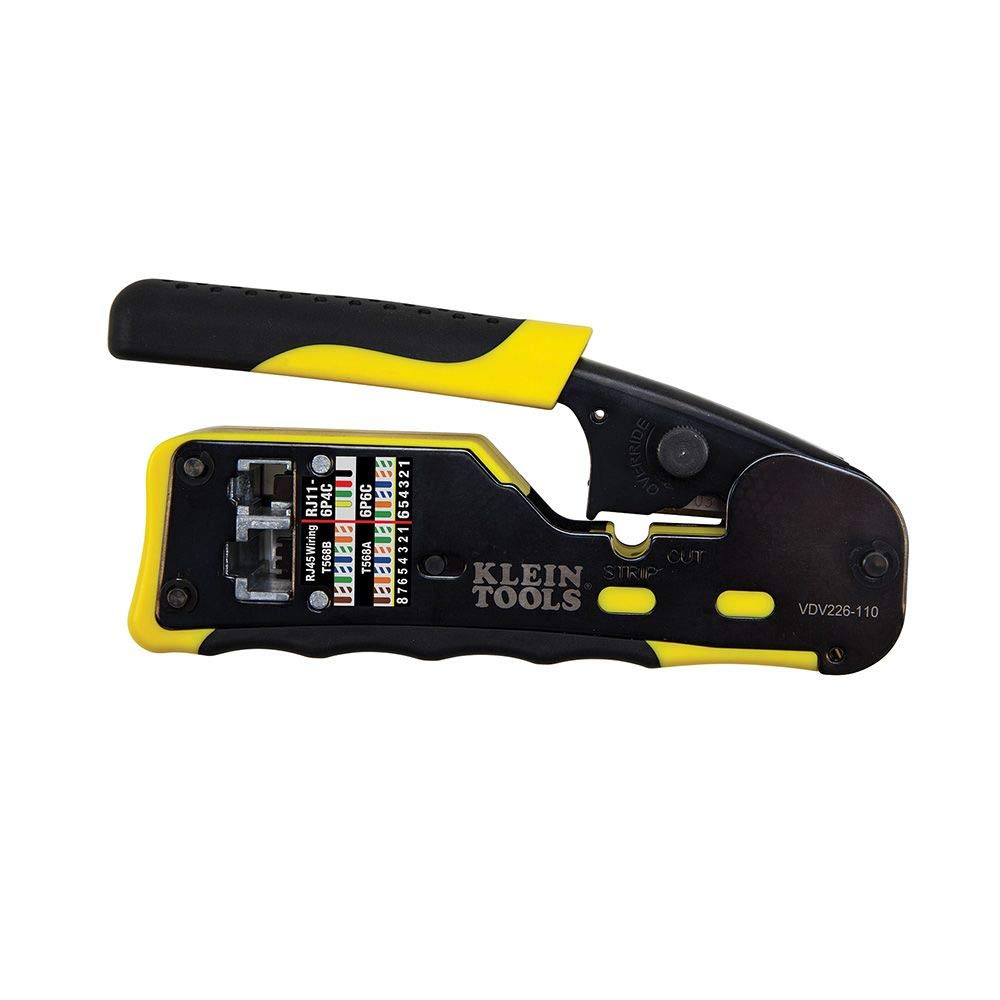
This is just the one I use. You will likely never use the RJ11 crimper port (I never have, but got it “just in case”). They have a similar one that is just RJ45. It also has a stripper and cutter, which come in handy. These are ratcheting RJ45 pass-through crimpers. You can find other manufacturers, but I like Klein. I believe Ideal makes a similar model, which would be my second choice. I don’t recommend generic Chinese ones at all.
Lots of network cabling veterans will trash talk folks who use pass-through connectors. As a cabling veteran of over 25 years with arthritis and not the best eyesight anymore- I LOVE them. They are a lot easier to work with, and more important- verify the conductor order, before crimping. Just be sure the conductors are cut off flush with the end of the connector. Also- get good connectors from brands like Cable Matters, Klein, Eaton, Ideal, and Tripp Lite. You definitely do NOT want cheap Chinese RJ45s, regardless of how you crimp them.
Some other pointers: Do not mix Cat. 5e and Cat. 6 (or 7) connectors. They are made to different standards and for different gauge wire, and you will have issues. Also- use the appropriate connector for your wire type (stranded vs. single-conductor). You should also only use pure copper wire, and not CCA (Copper Clad Aluminum). The latter is cheap, and you get what you pay for.
Electrical Tester (Multimeter):
Okay, after my network tester recommendation, don’t worry- you don’t need a Fluke for this, although they do make the best. You want something to test resistance, continuity, and AC and DC voltage, which just about any multimeter can do. Even a dirt-cheap $8 Harbor Freight multimeter (which is actually in this list) can get the job done, although I wouldn’t count on it to last as long as or be as accurate as a better meter. In our case, for holiday light shows, you don’t really need anything super-accurate anyway. I actually have a variety of meters, because I keep them in different tool boxes and bags, and on different workbenches, for different projects. I do prefer name-brand, but I’ll admit I have a couple of the Harbor Freight and other off-brand ones around. Here are a some I like:
Ideal 61-747
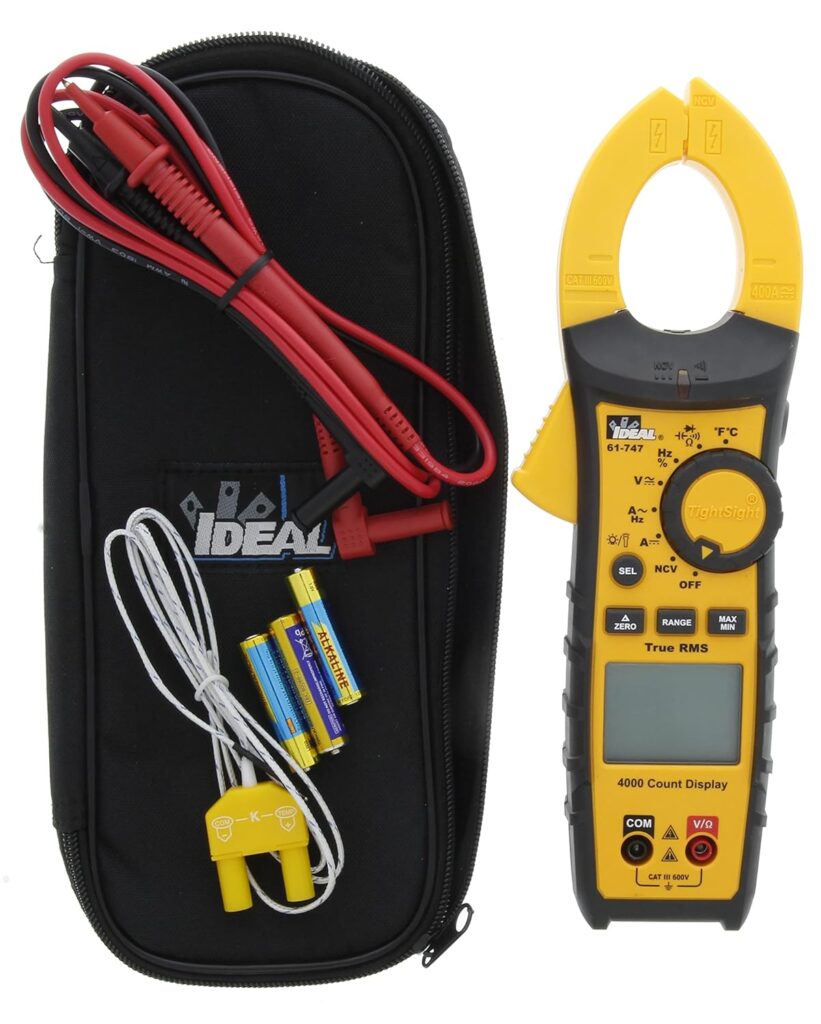
I highly recommend clamp meters, as they provide a safe way to measure amps (current). The alternative is to wire the meter in series with the power source and load, using a shunt for higher-current loads, which can be very dangerous. I’m not a fan of Ideal’s networking tools, but I LOVE this clamp meter for a couple of reasons. First, the clamp measures DC amps, which is a big deal in our hobby. No guesswork needed to figure out how much the amp draw is for a prop or string of pixels. You can easily monitor it “live”. The best part for me is it has a 2nd LCD on the very bottom of the meter, making it readable in any common orientation. It also has a built-in flashlight and backlight on the LCDs, which are large and easy to read. It has fast auto-ranging and can show min/max values for a given test. Another thoughtful addition is a probe clip on the back of the stationary clamp for easy handheld use.
You can buy it on Amazon (affiliate link), or in many electrical supply, hardware stores and home centers. I bought mine at Lowes.
Klein Tools CL200
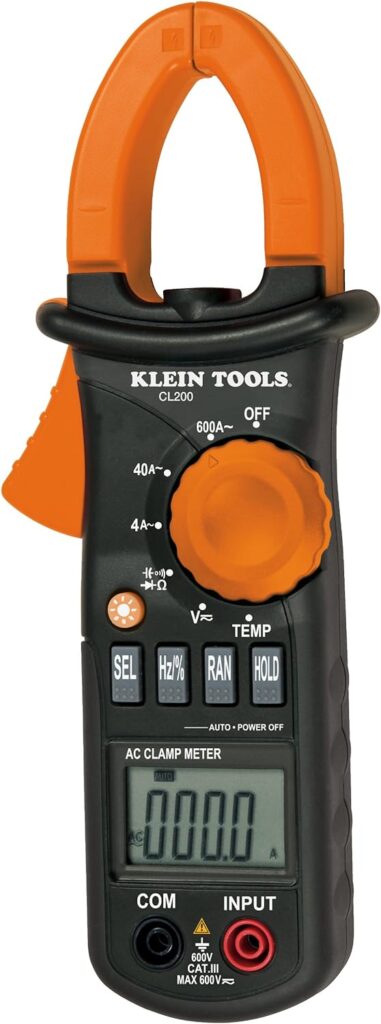
This is out of production now, but was my favorite clamp meter before I got the Ideal one above. It is auto-ranging with a similar clear, backlit LCD display and flashlight. It is also about half the size (overall volume) of the Ideal meter, so is a bit more toolbox friendly. It doesn’t do DC amps or have a bottom display though. Similar Klein meters are available though, and they are a solid choice.
KAIWEETS Multimeter Tester KM601s
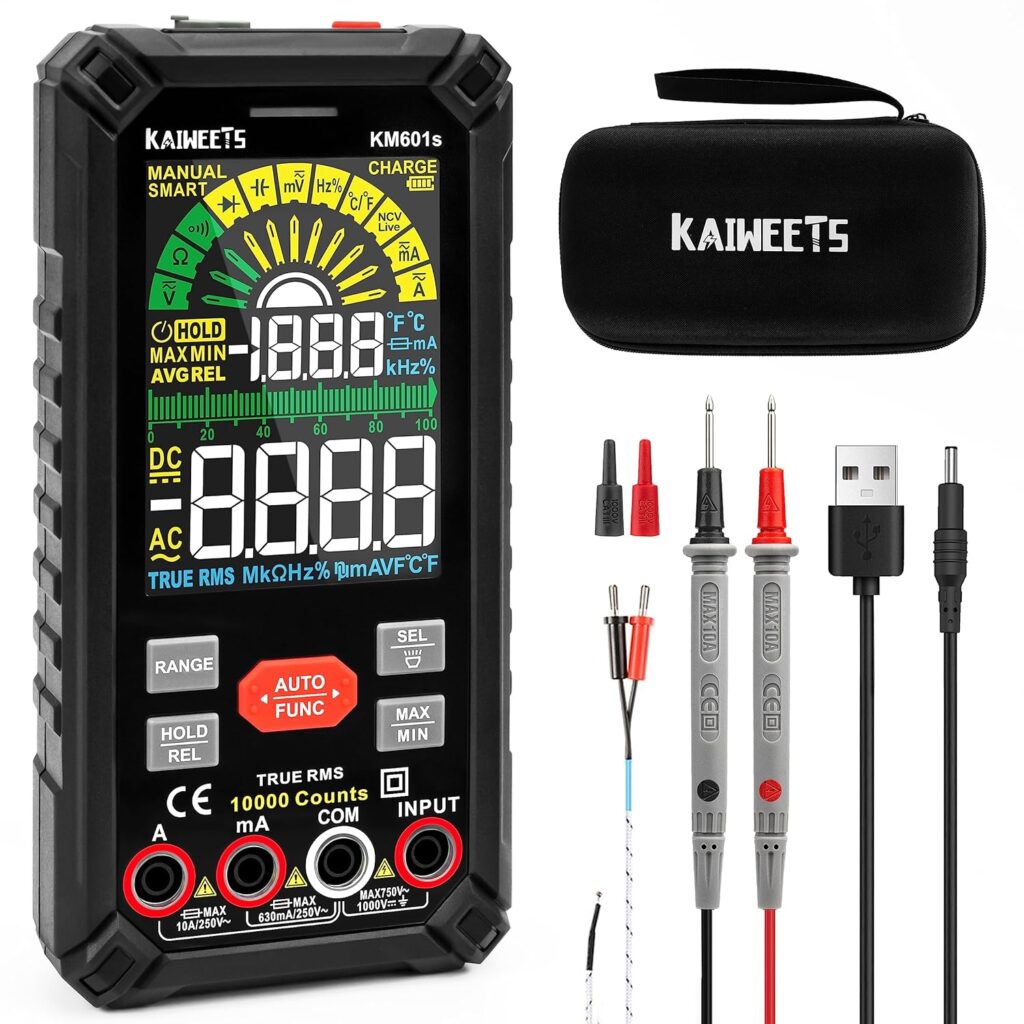
Okay, I’ll admit that as a professional this is not my first choice for a meter. It’s “cheap Chinese” and at least looks gimmicky. My wife got it for me as a gift in 2022. The one I have is an older disposable battery powered one (Model KM601), while this one uses a rechargeable battery and they moved the probe connectors from the bottom to the front. Other than that, I believe they are functionally the same.
What I really like about it is the large colorful display and automatic AC and DC voltage and Resistance/continuity testing. If you’ve ever accidentally hooked an older meter to measure continuity or ohms up to a live circuit- you know why.(!) These are also the most-common measurements you will use a multimeter for, so being completely automatic can save you a lot of fidgeting, especially in sub-freezing temps.
While kind-of cheesy, it lights up the appropriate test ports for current measurement based on the range you pick, which if nothing else is a nice reminder to use the correct port for mA vs 10A. It is actually solidly built, with a rubber sleeve around the meter itself. In my own, admittedly limited, testing- it’s just as accurate as the more expensive meters for voltage and resistance measurements. It has a flashlight and non-contact voltage sensor too. The only thing I don’t like about it is it isn’t great outside in sunlight- the color LCD display is hard to read.
Harbor Freight 59434 Multimeter

Not a professional choice by any stretch, but…
It’s regularly priced under $8, and they are frequently a coupon deal for $3.99. They aren’t very durable or auto-ranging (this is an old-school meter) and the probes are (really) cheap. It’s accurate enough for our needs in this hobby though, and if you accidentally leave it out in the yard before a rain or snow storm- no big deal. It even has a transistor test socket and mode, if you actually need such a thing these days. It reminds me of the old “VOM”s I used for electronics in the ’80s, probably using the same technology. 😊
Pixel Tester

This one is from Wired Watts, who I highly recommend, but you can get similar ones from any pixel vendor and many Chinese retailers. They are usually under $10 (I wouldn’t pay more than that for one). I’ll actually admit that I haven’t bought one, as I have a homemade one that does the same thing that I built when I was just starting out. If I was starting out now- I would definitely just buy one of these. Be sure to get one with your preferred connector (most use either xConnect or Ray Wu). I’ve found it handy to have (build) an adapter that goes to alligator/test clips on the pixel side, and to my preferred power-only connector on the power side. You also may want to buy an optional power supply, but keep in-mind that you will need to use a PSU with enough amps to run the pixels you are connecting to it. This is why most aren’t sold with one.
And one last thing…
To go with the above, you want a string of pixels or a small prop that you can use for testing the controller side of a circuit. I have a “puck” that I originally made out of scraps of PVC pipe as an experiment to light up a blow-mold that has come in really handy for this. It’s not much to look at, but it works great when debugging a prop that isn’t lighting-up. It has enough pixels to show a pattern, and is very rugged thanks to the PVC tubes.


